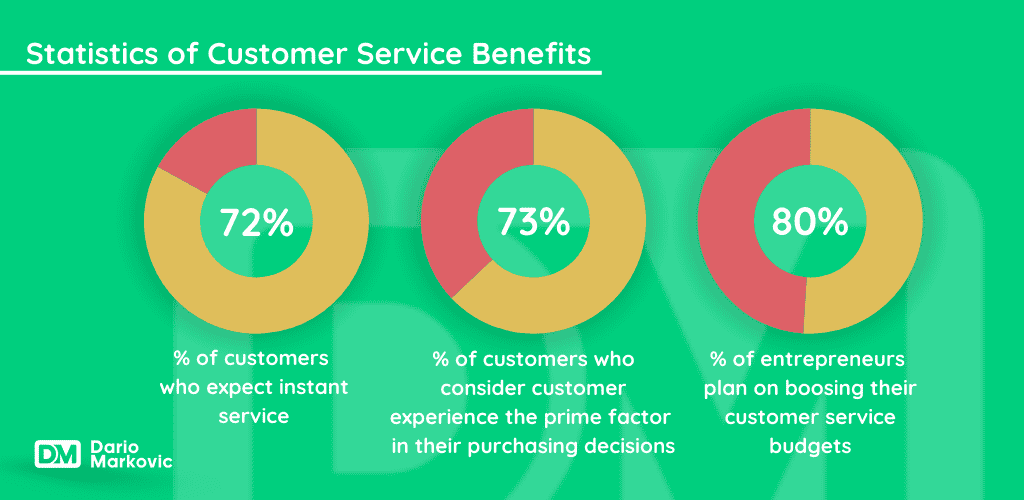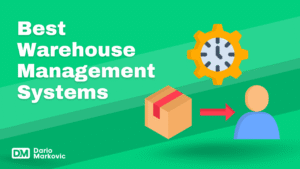In today’s globalized economy, businesses constantly seek ways to optimize operations and improve customer satisfaction. One effective strategy that has gained significant traction is customer service outsourcing.
In this guide, I’ll explore what is customer service outsourcing, its benefits, and how it can transform your business by enhancing efficiency and customer experience.
What is Customer Service Outsourcing?
Customer service outsourcing is hiring third-party service providers to handle customer support functions on behalf of a business. These third-party providers, often located in different countries or regions, manage customer service tasks such as phone support, email responses, live chat, and social media interactions.
By outsourcing customer service, businesses can focus on their core activities while ensuring their customers receive timely and professional support.
Reasons You Need to Know About Customer Service Outsourcing
Understanding customer service outsourcing is crucial for businesses aiming to optimize their customer support operations. Here are some specific reasons why outsourcing is essential:
- Cost Efficiency: Reduces operational costs by leveraging the economies of scale offered by outsourcing providers.
- Access to Expertise: Provides access to experienced professionals and advanced technology without needing in-house investment.
- Scalability: Allows businesses to scale support operations up or down based on demand.
Focus on Core Activities: Frees up internal resources for core business functions and strategic initiatives.
By recognizing these benefits, businesses can make informed decisions about integrating customer service outsourcing into their operations.
Step-by-Step Instructions to Implement Customer Service Outsourcing
Step 1: Assess Your Customer Service Needs
Evaluate your current customer service operations to identify areas that could benefit from outsourcing. Consider factors such as the volume of inquiries, response times, customer satisfaction levels, and the complexity of support tasks.
Step 2: Choose the Right Outsourcing Partner
Select a reliable outsourcing partner that aligns with your business goals and values. Consider the following factors:
- Expertise and Experience: Look for providers with a proven track record in your industry.
- Technology and Infrastructure: Ensure they have the necessary technology and infrastructure to handle customer service needs.
- Cost and Pricing Models: Evaluate their pricing models to ensure they fit within your budget.
- Cultural Fit and Communication: Choose a partner that understands your business culture and can communicate effectively with your customers.
Step 3: Define Service Level Agreements (SLAs)
Work with your outsourcing partner to establish service level agreements (SLAs) defining performance metrics, response times, quality standards, and escalation procedures. SLAs ensure both parties have aligned expectations and accountability.
Step 4: Onboard and Train the Outsourcing Team
Provide comprehensive training to the outsourcing team on your products, services, brand values, and customer service protocols. This will ensure they can deliver consistent, high-quality support.
Step 5: Monitor and Optimize Performance
Monitor your outsourcing partner’s performance regularly through key performance indicators (KPIs) such as response times, customer satisfaction scores, and resolution rates. Use this data to continuously optimize your customer service operations.
Critical Considerations for Successfully Implementing Customer Service Outsourcing
- Quality Control: Establish robust measures to ensure the outsourcing team meets your service standards.
- Data Security: Implement robust data security protocols to protect customer information and comply with regulatory requirements.
- Communication: Maintain open and regular communication with your outsourcing partner to address any issues promptly.
- Customer Feedback: Collect and analyze customer feedback to identify areas for improvement and ensure customer satisfaction.
Taking it to the Next Level: How to Enhance Customer Service Outsourcing
To maximize the benefits of customer service outsourcing, consider these advanced strategies:
- Integrate with CRM Systems: Ensure seamless integration between the outsourcing provider’s systems and your customer relationship management (CRM) platform.
- Use Advanced Analytics: Leverage analytics to gain insights into customer behavior and preferences, enabling more personalized and proactive support.
- Implement Multi-channel Support: Provide support across multiple channels (phone, email, live chat, social media) to meet customers’ preferences and increase accessibility.
Alternatives to Customer Service Outsourcing
While outsourcing offers numerous benefits, consider other customer service strategies:
In-house Customer Service: Maintain an in-house team for direct control over customer support operations and quality.
Hybrid Model: Combine in-house and outsourced customer service to balance control and efficiency.
- Self-Service Options: Implement self-service solutions such as FAQs, knowledge bases, and chatbots to reduce the volume of support inquiries.
Wrapping Up and My Experience with Customer Service Outsourcing
Customer service outsourcing can be a game-changer for businesses looking to enhance efficiency, reduce costs, and improve customer satisfaction. From my experience, outsourcing customer service has significantly improved operational efficiency and customer experience.
By carefully selecting the right outsourcing partner and continuously monitoring performance, businesses can reap the full benefits of this strategy.
Statistics on the Benefits of Customer Service Outsourcing
Understanding the quantitative impact of customer service outsourcing can provide valuable insights into its effectiveness.
Here are some compelling statistics that highlight the benefits of outsourcing customer service:

Cost Savings
- Operational Cost Reduction: Outsourcing customer service can save businesses up to 60% on operational costs compared to maintaining an in-house team.
- Lower Labor Costs: Outsourcing to regions with lower labor costs can result in significant savings, with average savings of 30% to 50%.
Improved Customer Satisfaction
- Higher Satisfaction Rates: 85% of businesses report that outsourcing customer service has improved customer satisfaction.
- 24/7 Support Availability: 70% of customers expect 24/7 support, and outsourcing enables businesses to meet this expectation without incurring excessive costs.
Enhanced Scalability
- Flexible Scaling: 75% of businesses state that outsourcing provides the flexibility to scale support operations up or down based on demand.
- Seasonal Demand Management: Outsourcing helps manage seasonal spikes in customer inquiries, with 60% of businesses reporting better handling of peak periods.
Access to Expertise
- Specialized Skills: 80% of businesses benefit from outsourcing partners’ specialized skills and expertise.
- Advanced Technology: 65% of companies gain access to advanced customer service technologies through outsourcing, which they may not have otherwise afforded.
Focus on Core Activities
- Increased Focus: 78% of businesses report that outsourcing customer service allows them to focus more on their core activities and strategic initiatives.
- Improved Productivity: Companies that can dedicate more resources to core business functions experience a 25% increase in productivity.
Proactive Customer Engagement
- Proactive Support: 72% of businesses see increased proactive customer engagement and issue resolution through outsourcing.
- Customer Retention: Companies that outsource customer service report a 20% increase in customer retention rates due to improved support quality.
Data-Driven Insights
- Better Insights: 68% of businesses gain better insights into customer behavior and preferences through the analytics provided by outsourcing partners.
- Continuous Improvement: 55% of companies continuously improve their customer service strategies based on data-driven insights from outsourced support operations.
These statistics underscore the significant benefits of customer service outsourcing. By reducing costs, improving customer satisfaction, enhancing scalability, and providing access to specialized expertise, outsourcing can be a powerful strategy for any business looking to optimize its customer support operations.
Dario's Insights
Having worked with various businesses on customer service outsourcing, I’ve observed several vital insights that can help you succeed:
- Choosing the Right Partner: The success of outsourcing largely depends on selecting a partner that aligns with your business values and has a strong track record.
Clear Communication: Maintaining clear and open communication with your outsourcing partner is crucial for addressing issues and ensuring alignment with your goals.
- Continuous Improvement: Regularly review performance metrics and customer feedback to identify areas for improvement and ensure your outsourcing strategy evolves with your business needs.
By implementing these insights, you can leverage customer service outsourcing to enhance your business operations and deliver exceptional customer experiences.
FAQ
Customer service outsourcing involves hiring third-party service providers to handle customer support functions on behalf of a business. These providers manage phone support, email responses, live chat, and social media interactions.
Outsourcing customer service offers several benefits:
- Cost Efficiency: Reduces operational costs by leveraging economies of scale.
- Access to Expertise: Provides access to experienced professionals and advanced technology.
- Scalability: Allows businesses to scale support operations based on demand.
- Focus on Core Activities: Frees up internal resources to focus on core business functions.
When selecting an outsourcing partner, consider the following factors:
- Expertise and Experience: Look for providers with a proven track record in your industry.
- Technology and Infrastructure: Ensure they have the necessary technology and infrastructure.
- Cost and Pricing Models: Evaluate their pricing models to fit your budget.
Cultural Fit and Communication: Choose a partner that understands your business culture and can communicate effectively with your customers.
To ensure quality control, establish robust measures such as:
- Service Level Agreements (SLAs): Define clear performance metrics and quality standards.
- Regular Monitoring: Monitor key performance indicators (KPIs) like response times and customer satisfaction.
- Customer Feedback: Collect and analyze customer feedback to identify areas for improvement.
- Regular Audits: Conduct regular audits and reviews of the outsourcing partner’s performance.
Outsourcing customer service can lead to significant cost savings:
- Operational Cost Reduction: Businesses can save up to 60% on operational costs.
- Lower Labor Costs: Savings of 30% to 50% by outsourcing to regions with lower labor costs.
- Efficiency: Handling multiple customer inquiries simultaneously reduces the need for a larger in-house team.
Outsourcing improves customer satisfaction by:
- 24/7 Support Availability: Meeting customer expectations for round-the-clock support.
- Faster Response Times: Providing immediate and efficient support.
- Access to Expertise: Leveraging specialized skills and advanced technology for better service quality.
Yes, outsourcing customer service helps businesses scale by:
- Flexible Scaling: Adjusting support operations based on demand.
- Seasonal Demand Management: Handling spikes in customer inquiries during peak periods effectively.
- Resource Allocation: Allowing internal resources to focus on core activities and strategic initiatives.
To integrate outsourcing with your existing operations:
- Assess Needs: Evaluate your current customer service operations to identify areas for outsourcing.
- Choose a Partner: Select a reliable outsourcing partner with relevant expertise.
- Define SLAs: Establish clear service level agreements to ensure performance standards.
- Onboard and Train: Provide comprehensive training to the outsourcing team on your products, services, and protocols.
- Monitor Performance: Regularly monitor and optimize the outsourcing partner’s performance.
Alternatives to customer service outsourcing include:
- In-house Customer Service: Maintaining an internal team to control support operations directly.
- Hybrid Model: Combining in-house and outsourced customer service for a balanced approach.
- Self-Service Options: Implementing FAQs, knowledge bases, and chatbots to reduce the volume of support inquiries.
Consider outsourcing customer service if:
- You Need Cost Savings: Outsourcing can significantly reduce operational costs.
- You Require Expertise: Access to specialized skills and advanced technology.
- You Want to Scale: Flexibility to scale support operations based on demand.
- You Aim to Improve Focus: Freeing up internal resources for core business functions.
By evaluating these factors, you can determine if outsourcing customer service aligns with your business goals and needs.



